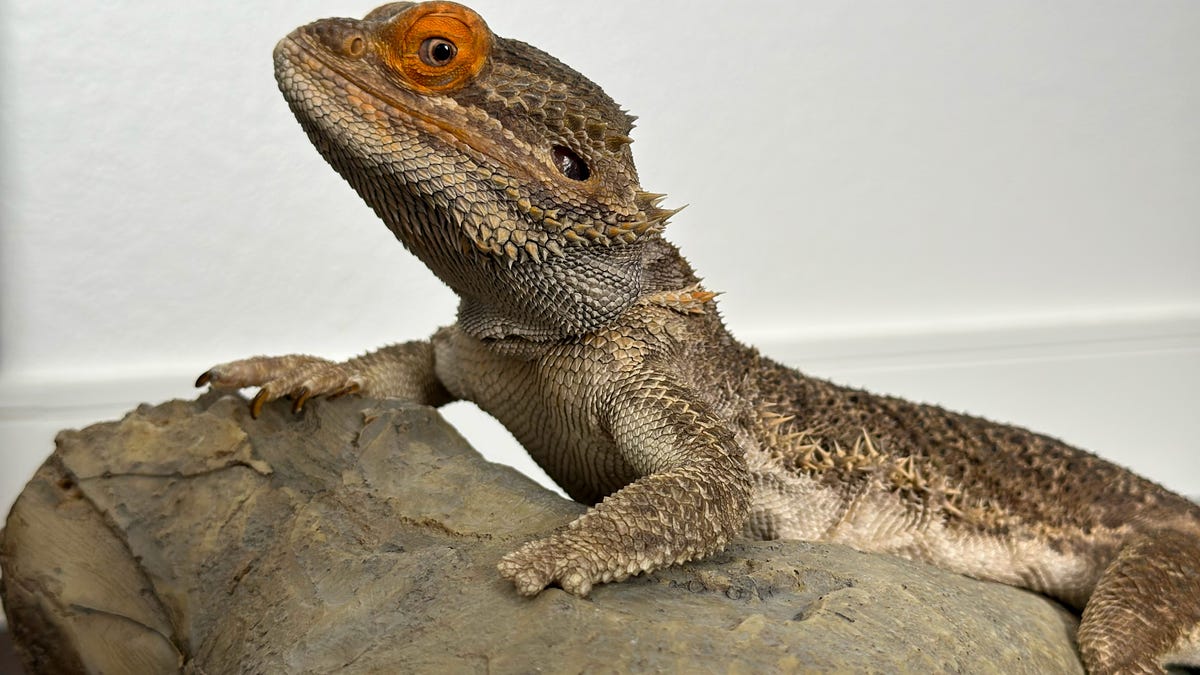Discover the ‘golden retriever’ of pet reptiles: the bearded dragon
Bearded dragons are often viewed as the beginner’s choice among pet reptiles.
Experts believe that if you’re new to reptiles and looking for a low-maintenance pet, a bearded dragon might just be ideal for you. These reptiles have become increasingly popular and are suitable for those with limited living spaces or allergies to traditional pets like dogs and cats, as noted by the U.S. Association of Reptile Keepers.
“Bearded dragons are known for their laid-back nature,” shared Michelle Thompson, who had her bearded dragon Nubby perched on her shoulder during a recent discussion with YSL News.
Nearly 6 million homes in the U.S. keep at least one pet reptile, according to the American Veterinary Medical Association. Recent internet search data indicates that bearded dragons rank as the most sought-after choice, as reported by Reptile Magazine in 2021.
“They are among the top picks for pet reptiles, and we often suggest them to those wanting to try keeping reptiles for the first time,” commented Whitney Miller, chief veterinarian at Petco.
Here are some adorable behaviors typical of bearded dragons, along with common pitfalls that new owners face, as shared by pet experts.
The ‘golden retriever’ of reptiles
When they’re feeling good, bearded dragons will happily lounge on your lap for hours, enjoying your body warmth since they’re cold-blooded, Thompson revealed. They might even nestle into you, finding warmth in the curve of your neck.
<p”They’re truly like the golden retrievers of reptiles,” Thompson stated. Bearded dragons enjoy curling up on the couch with you while watching TV, added U.S. Association of Reptile Keepers President Phil Goss, who mentioned that families sometimes let their bearded dragons join in on board game nights.
<p”They thrive on human interaction,” said Goss, based in southern Indiana. “They really become a part of people’s daily routines.”
Bearded dragons use their strong toe nails to grip, which enables many owners to carry them around on their shoulders, Goss noted. Kids can easily take their bearded dragon over to a neighbor’s house or even check the mail with their pet resting comfortably on their shoulder, and the beardie will just cling onto them, Goss added.
Don’t just feed them bugs
It’s a common myth that bearded dragons primarily eat crickets, unlike some other reptiles, stated both Goss and Thompson. In addition to protein from bugs, these dragons need a substantial amount of leafy greens in their diet.
Although bearded dragons enjoy munching on bugs, some owners may inadvertently overfeed them since “they would happily eat insects all day if given the chance,” Thompson remarked.
“They love unhealthy treats,” she explained, likening mealworms to “cheeseburgers” for bearded dragons.
With a balanced diet, bearded dragons can live for 15 years, and even up to 20 years in some cases, Thompson stated.
Miller highlighted the significance of monitoring their waste, saying that examining a bearded dragon’s droppings can provide essential health insights. When any reptile or bird owner visits the vet, the professional may likely request a fecal sample, which might sound unpleasant but is crucial.
The droppings of a healthy bearded dragon should be firm and display a brown and white color, Miller explained. The white part consists of uric acid, which is a solid form of urine.
If not overfed with too many insects, Thompson mentioned that these reptiles can enjoy a diverse range of vegetables. The most beneficial options include dark leafy greens such as arugula, collard greens, mustard greens, bok choy, and turnip greens. They also love sweet potatoes, bell peppers, butternut squash, and green beans.
While they do like fruits such as strawberries and blueberries, these should be offered in very small quantities due to their high sugar content, according to Thompson. Goss advised against giving them citrus fruits as they can be harmful.
Beardies Require UV Light and Regular Bulb Changes
Bearded dragons need UV or UVB lighting for their well-being, as this type of light helps their bodies process essential nutrients like calcium. Additionally, they need a heat source from a bulb.
If they don’t receive adequate UV exposure, bearded dragons can develop serious bone conditions and other health issues.
A common mistake pet owners make is assuming that a UV lamp is still functional simply because it shines light. Thompson emphasized that these bulbs should be replaced every 6 to 12 months, even if they seem to be working fine.
“It’s a frequent occurrence: ‘I thought it was still functional, so I didn’t change it,'” Thompson noted.
Ensuring that your bearded dragon’s habitat maintains optimal UV levels is crucial to its health, but spending time outside the enclosure will greatly enhance the bond between the pet and its owner.
“He loves just sitting with me, watching what’s going on around him and enjoying life,” Thompson shared.

